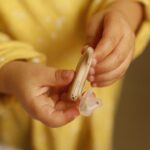In the pursuit of optimal oral hygiene, selecting the right toothbrush plays a crucial role. A toothbrush is a simple yet essential tool for maintaining healthy teeth and gums. This article provides straightforward tips for choosing the right toothbrush to ensure effective oral care.
Consider Bristle Type
The type of bristles on a toothbrush greatly affects its cleaning performance. Dentists often recommend opting for toothbrushes with soft bristles. Soft bristles effectively remove plaque and debris without damaging the gums or tooth enamel. They are gentle on the teeth and gums, making them suitable for most individuals.
Choose the Right Size
Toothbrushes come in various sizes, and selecting the appropriate size matters. A toothbrush that has a smaller head can reach difficult-to-access areas, such as the back of the mouth, more effectively. It allows for better maneuverability and thorough cleaning of all teeth surfaces.
Opt for A Comfortable Grip
A comfortable grip ensures better control while brushing. Toothbrushes with ergonomic handles or non-slip grips are preferable, as they prevent slippage and provide a comfortable brushing experience.
Manual vs. Electric
The choice between an electric and a manual toothbrush depends on personal preference. Both options can effectively clean teeth when used correctly. Electric toothbrushes, however, can offer advantages such as built-in timers to ensure brushing for the recommended duration and specialized brushing modes for different needs.
Check for ADA Approval
Opt for toothbrushes with the American Dental Association (ADA) Seal of Acceptance. This seal indicates that the toothbrush has undergone rigorous testing and meets the ADA’s criteria for safety and effectiveness in removing plaque and maintaining oral health.
Consider Specific Needs
Individuals with specific oral health needs, such as sensitive teeth or braces, should choose toothbrushes tailored to their requirements. There are toothbrushes designed specifically for sensitive teeth, with extra-soft bristles and gentle cleaning actions. Orthodontic toothbrushes are designed to clean around braces and orthodontic appliances effectively.
Replace Regularly
Regardless of the type of toothbrush chosen, it’s important to replace it regularly. Toothbrushes wear out over time and become less effective. A general rule of thumb is to replace a toothbrush every three to four months, or sooner if the bristles show signs of fraying.
Focus on Technique
Ultimately, the effectiveness of brushing relies not only on the toothbrush but also on the brushing technique. Proper technique involves brushing for at least two minutes, using gentle circular motions, and paying attention to all tooth surfaces, the tongue, and the roof of the mouth.






